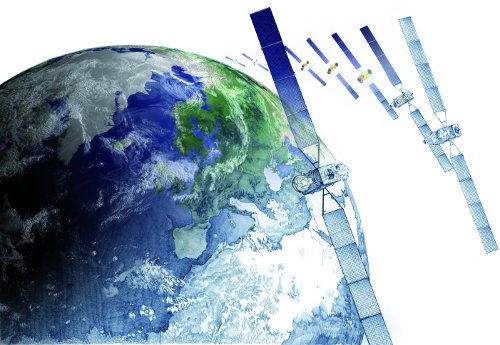Green Satellites
DID YOU KNOW?
Satellites fly for up to 15 years using solar energy.
Many people assume that satellites cannot be green as they immediately visualise a large rocket launching with flames beneath it & clouds of smoke around it. As stated however, the main boosters in the Ariane 5 satellite launcher use Liquid Hydrogen and Liquid Oxygen as the propellant with the by-product on combustion being water.
Since launchers can launch more than one telecommunications satellite at a time, the carbon footprint of the launcher should be spread across multiple satellites which will then operate for around 15 years. Solid propellant rockets only have about 10% of their mass as oil-based binder. Aluminium and ammonium perchlorate are produced by electrolytic processes. Over 67% of Ariane 5’s solid exhaust products are dumped into the first 20 km of the atmosphere and rained out.
It takes about the same energy to launch an Ariane 5 as to fly a Boeing 747 from London to New York and Ariane’s engines are 3 times more efficient than those used by Boeing. So an entire year’s worth of Ariane 5 launches creates less greenhouse gas pollution than one evening’s airline flights from New York to London. And if the world must eventually move towards a “hydrogen economy” then the technology required will come from the modern generation of space launchers.

Once launched, satellites use predominantly solar power generated from their large solar arrays, although they do use some on board fuel which limits the lifetime of the satellite. Satellite Control Centres and a limited number of uplink stations do consume some power on the ground, but when compared with for example, a network of more than 1000 terrestrial TV transmitters, it can readily be seen that the satellite network can offer a low carbon solution.
For example the current analogue TV services of BBC, ITV, Ch4 and Ch5 are delivered to the British Isles from over a thousand UHF transmitters. Many of these are low power relays but there are about 55 transmitters with a power output greater than 50kW and a few main transmitters, such as Crystal Palace, that radiate 1 MW. The UK terrestrial TV broadcast system consumes more than 50 MW and releases at least a quarter of a million tons of CO2 per annum. A single satellite can provide all the UK’s TV in HD format and releases zero CO2 into the atmosphere.
Publication: Case4Space - Summary report: EADS Astrium, October 2006
Presentation: Satellites for Energy Efficiency